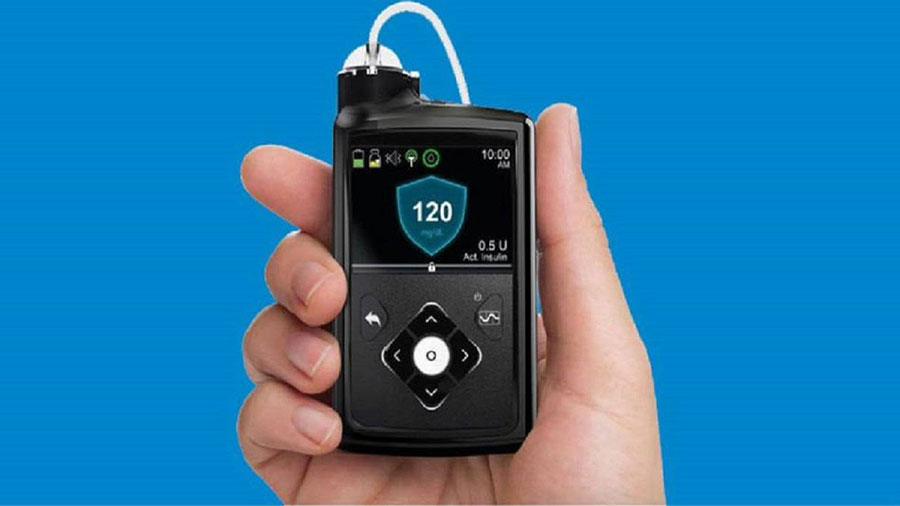On Wednesday, the world’s first automated insulin delivery system, or artificial pancreas, was approved by the Food and Drug Administration. This is a big deal for type 1 diabetics, who will get to live a better life with a device that automatically pumps insulin and monitors glucose levels.
This artificial pancreas is developed by the medical device powerhouse Medtronic and it is officially named MiniMed 670G. It is still unknown the price of the device but it will probably cost between $5000 and 8000. Though it has been approved by U.S. authorities even six months ahead of schedule, it will have to wait for European regulators to approve it, too. It is believed it will be in markets for next year.

The biggest development for type 1 diabetics
Diabetes is often referred to as a “silent killer”. Every year diabetes grows as a concerning issue among societies and it is a factor that accelerates diverse diseases. In 2012, 29 million people had diabetes in the United States, compared to the 26 million people living with diabetes according to the statistics from 2010.
Most of them were type 2 diabetes, caused by the organism’s inability to properly use insulin to convert sugar into energy. They are often advised to change their eating and exercising habits to slow down the progression of diabetes.
Though type 1 diabetes is not the most common among diabetics, at least 1.25 million children and adults in America live with it. Type 1 diabetics have little to none insulin production from their pancreas and it is generally linked to genetics.
Sometimes the seriousness and impact of Type 1 diabetes are underestimated because of the overwhelming number of cases of Type 2 diabetes. However, it is not easy to live with Type 1 diabetes, people with this disease might even live around 12 years less than regular population, according to a recent study made by Australian universities. As well, they have to continuously check their blood sugar levels.
What does the “Artificial pancreas” do?
The good news is that now with the approval of Medtronic’s MiniMed 670G, type 1 diabetics could be about to change their diabetes-related routine. The device was approved for those aged 14 and above. It measures the patient’s glucose level every 5 minutes and provides insulin every time it is needed by the organism.
MiniMed 670G hybrid closed loop system, uses a sensor with a protruding needle slipped under the skin, while a smartphone-like insulin pump is worn in the abdomen delivering the insulin via tubes that lead to the catheter. The insulin pump and the glucose monitor were already on the market but were offered separately. Now Medtronic makes possible the communication between both devices.
MiniMed 670G predicts when a person’s blood sugar is dropping preventing the low levels in the first place and it corrects high sugar levels in the blood. Given that, it is now called “artificial pancreas”.
“You get almost normalized overnight blood glucose. For people with Type 1 diabetes, that’s massively important,” said Aaron Kowalski, chief mission officer for the JDRF, the organization that funds much of the “artificial pancreas” research. “The diabetes isn’t gone, but [wearers] can think about it less …This is a historic milestone” he added.
It was tested in more than 10 dozens of patients. And the results showed that in general the HbA1c blood sugar level of the patients had fallen from a baseline of 7.4% to 6.9% and more than half of them even showed an HbA1c below 7% by using the device.
But MiniMed is not perfect
Though it represents a great improvement for the life conditions of type 1 diabetics, they still have to instruct the device to deliver extra insulin during meal time. They have to recalibrate the device every 12 hours, change the glucose sensor every week, and refill the device’s insulin reservoir every 3 days. As well, users must make adjustments when they exercise.
Wearability is another concern since they are trying to make a smaller device. in order to do that, they are trying to raise funds. As well, though it was approved by American authorities, type 1 diabetics will have to wait until spring 2017 when the MiniMed 670G is available and maybe a little more for markets in Europe.
Another issue could be the access problem. Though insurances usually cover insulin pumps this is not the case for the CGM component. The JDRF is one of the several organizations lobbying to change that since access to better technologies for diabetics cannot only be for those who have the economic means. The device, though no official cost have been published, may cost between 5000 and 8000 dollars with an additional few thousand dollars a year for the disposable sensors.
“This is a priority for us,” Kowalski says. “We need to make sure people have access. Not just rich people, but anybody who will benefit.”
Source: The Motley Fool
